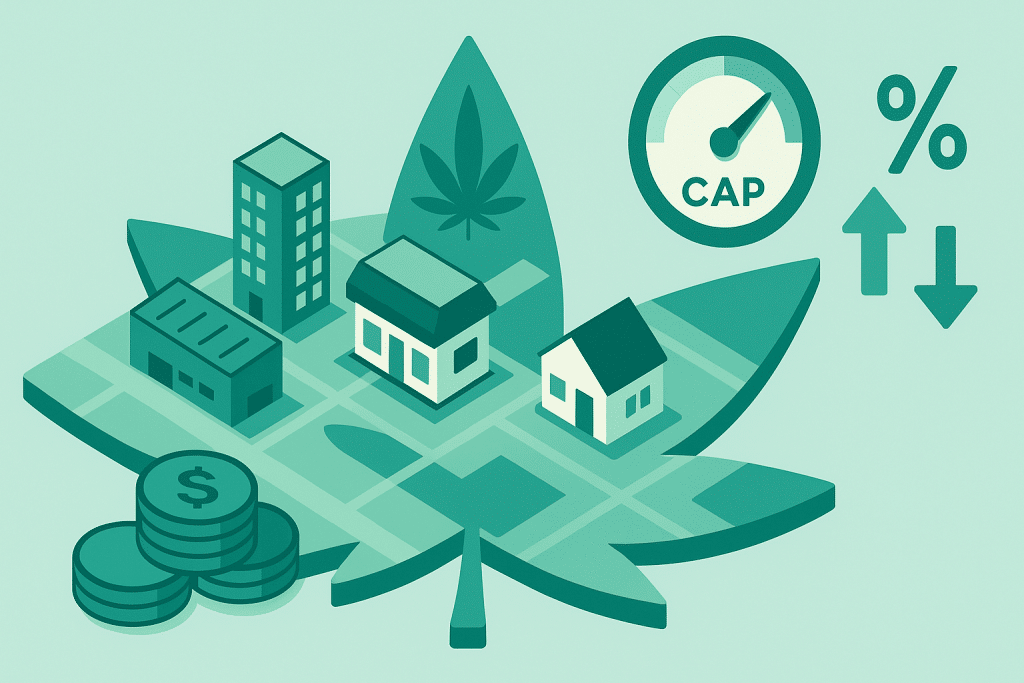
Prepared by: Colliers International Cannabis Focus Team

Market at a Glance
New York’s legal cannabis industry has rapidly scaled to over 300 licensed dispensaries open statewide as of early 2025, generating $1.06 billion in total retail sales since the first shops opened in late 2022.
One month into 2025 alone, retail sales exceeded $110 million, with an average $381,000 in monthly sales per dispensary during 2024[2]. Regulators project the market will hit $1.5 billion in annual sales by end of 2025 and exceed $3.3 billion by 2027, as the number of legal stores doubles to 625+ locations statewide by year-end [3].
This explosive growth is underpinned by robust consumer demand, but tempered by regulatory hurdles, a still-thriving illicit market, and unique real estate challenges.
Real Estate Fundamentals – Retail
Location strategy is paramount in New York’s cannabis retail. Optimal sites balance high visibility and foot traffic (or car traffic in outer boroughs) with compliance to strict buffers and zoning. In NYC, dispensaries are classified as Use Group 6C retail and must be ground-floor with a street-facing entrance[6].
Zoning restrictions and buffers have effectively eliminated large swaths of storefronts – maps of Manhattan show extensive “dead zones” around schools, churches, and existing dispensaries. The 1,000-foot rule between dispensaries[17] means each new store stakes a territorial claim, driving a “land rush” for the best remaining sites. Consequently, cannabis tenants often pay above-market rents to secure compliant locations[18]. In Manhattan’s prime corridors (e.g. SoHo, Fifth Ave, Midtown), cannabis rents range $100–$150 per square foot (NNN)[19], roughly 10–25% higher than comparable retail, with landlords pricing in perceived risk. For example, leases in trendy downtown areas like NoHo/Lower East Side have been reported around $120/sf NNN for 10-year terms with 3% annual escalations (versus ~$100 for non-cannabis retail).
Landlords typically insist on personal guarantees or parent guarantors given cannabis tenants’ limited operating history and often require 6–12 months of security deposit (or pre-paid rent in escrow). In outer boroughs and upstate cities, rents are more moderate but still carry a premium: expect $30–$60/sf in busy Brooklyn corridors (Williamsburg’s Bedford Ave, Downtown BK), $40–$70/sf in Queens hotspots (Long Island City, Jamaica), and $20–$40/sf in smaller cities (Buffalo, Albany) for quality space. Many landlords prefer triple net (NNN) leases, pushing property tax and maintenance costs to the tenant, which can add $5–$15/sf effective cost in NYC.
Tenant improvement (TI) packages vary – in this nascent phase, few landlords offer significant TI allowances due to federal illegality (and inability to get traditional financing themselves). Instead, the Dormitory Authority of NY (DASNY) had attempted a state-backed build-out program for social equity retailers, but delays there led many tenants to self-fund build-outs of $250K–$500K per store[20].
Free rent periods of 3–6 months are common to cover permitting and fit-out time, given the protracted timeline from lease signing to opening (often 6+ months). Overall, cannabis retail real estate in NY is a landlord’s market in terms of rent levels – but only a subset of landlords are even willing to play, due to concerns about federal law, banking, and potential nuisance (odors, crowds). Those that do are leveraging cannabis riders in leases to address compliance: clauses for immediate lease termination if tenant loses license, strict rules on on-site consumption (which is prohibited) and security requirements (e.g. cameras, 24/7 guards, no loitering)[21].
Please visit:
Our Sponsor
